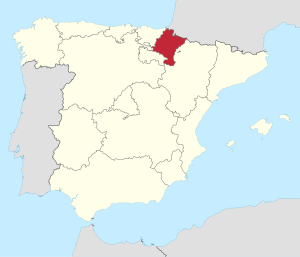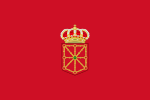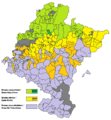Navarre facts for kids
Quick facts for kids
Navarre
|
|||
|---|---|---|---|
|
|||

Location of Navarra (in red) within Spain
|
|||
| Country | Spain | ||
| Capital | Pamplona | ||
| Area
(2.2% of Spain; Ranked 11th)
|
|||
| • Total | 10,391 km2 (4,012 sq mi) | ||
| Population
(2013)
|
|||
| • Total | 647,866 | ||
| • Density | 62.3488/km2 (161.483/sq mi) | ||
| • Pop. rank | 15th | ||
| • Percent | 1.3% of Spain | ||
| Demonym | |||
| • English | Navarrese | ||
| • Spanish | Navarro/a | ||
| ISO 3166-2 |
NA
|
||
| Official languages | Spanish (Basque is official in the Basque-speaking areas) | ||
| Statute of Autonomy | August 16, 1982 | ||
| Parliament | Cortes Generales | ||
| Congress seats | 5 (of 350) | ||
| Senate seats | 5 (of 264) | ||
| Website | Gobierno de Navarra | ||
Navarre is a special region in northern Spain. It is called an autonomous community, which means it has its own government and rules, but it's still part of Spain. The main city and capital of Navarre is Pamplona.
Navarre has a long and interesting history. Many years ago, when the powerful Roman Empire ruled a large part of Europe, the people living in the area that is now Navarre were called the Vascones. They were an ancient group of people who lived in this region.
Images for kids
-
The impressive Castle of Xavier
-
Carlists retreating to the Irache monastery during the Third Carlist War
-
A memorial in Pamplona for the Charters of Navarre, built after the Gamazada event (1903)
-
A beautiful view of the Irati Forest
-
The unique landscape of Bardenas Reales
-
The exciting Sanfermines festival in Pamplona
See also
 In Spanish: Navarra para niños
In Spanish: Navarra para niños















